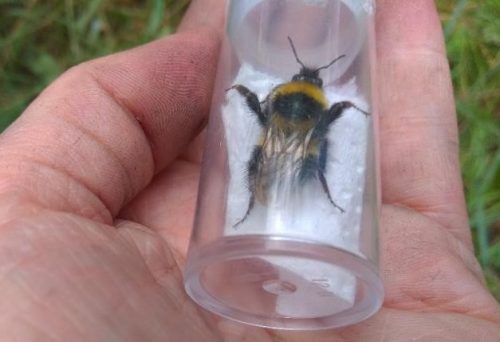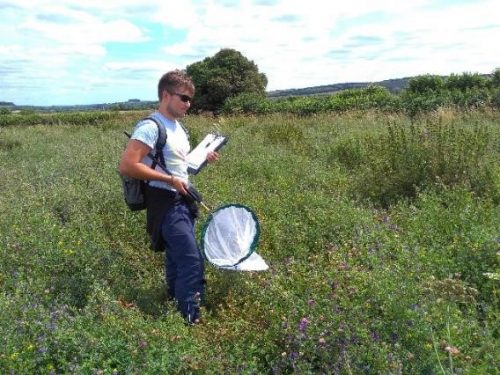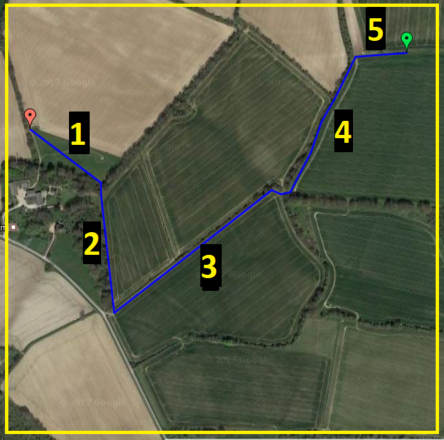Bumblebees are important pollinators of crops, and the abundance and numbers of species seen can indicate how diverse and resourceful the land is for wild pollinators.
Don’t let inexperience deter you – even if you can confidently identify only a few species to begin with, you’ll be amazed at how quickly you can pick up ID skills once you start looking. Be aware also that you’re most likely to come across only a handful of the 25 species found in Britain.
A garden bumblebee (Bombus hortorum) in a specimen vial © Jess Brooks
- You will need a bumblebee guide, a camera, farm field map, survey form and a butterfly/bug net if you have one. Plastic specimen tubes with a piece of tissue inside may also be useful.
- It takes a couple of hours to walk a bumblebee transect. If you think you can commit to survey once a month from March to October, the easiest way to collect meaningful data is to join the Bumblebee Conservation Trust’s national ‘BeeWalk’ survey.
- If you have limited resources or wish to survey a landscape-scale area, you can design a series of permanent transects that you walk twice a year.
- Using the Ordnance Survey 1-km grid, select alternate squares and identify a transect 1.5-2km long within each square. Try and include a mix of land uses.
- Divide the km transect into sections that differentiate habitats. Most farmland transects have 4-10 sections depending on diversity of land in your transect.
- Using the same methodology as the ‘BeeWalk’ survey (apart from survey frequency):
- Aim to walk the transect once in May and once in August.
- Choose a calm dry sunny day, when most bees are out working.
- Record start time and date. Walk at a steady pace, identifying and counting bumblebees that you see in each section on flowers on the route.
- Try and identify whether the bee is a queen, worker or male using your identification guide.
- If you have plant identification skills, write down the flower that the bumblebee is using. A summary of the plants used is educational for farmers, as well as informing farm habitat management.
- Over the years you can compare the abundance and species diversity for the whole transect and within transect sections.
Surveying bumblebees on legume strip © Jess Brooks
A 1×1-km survey square with 1.5-km bumblebee transect inside, split into 5 habitat sections



